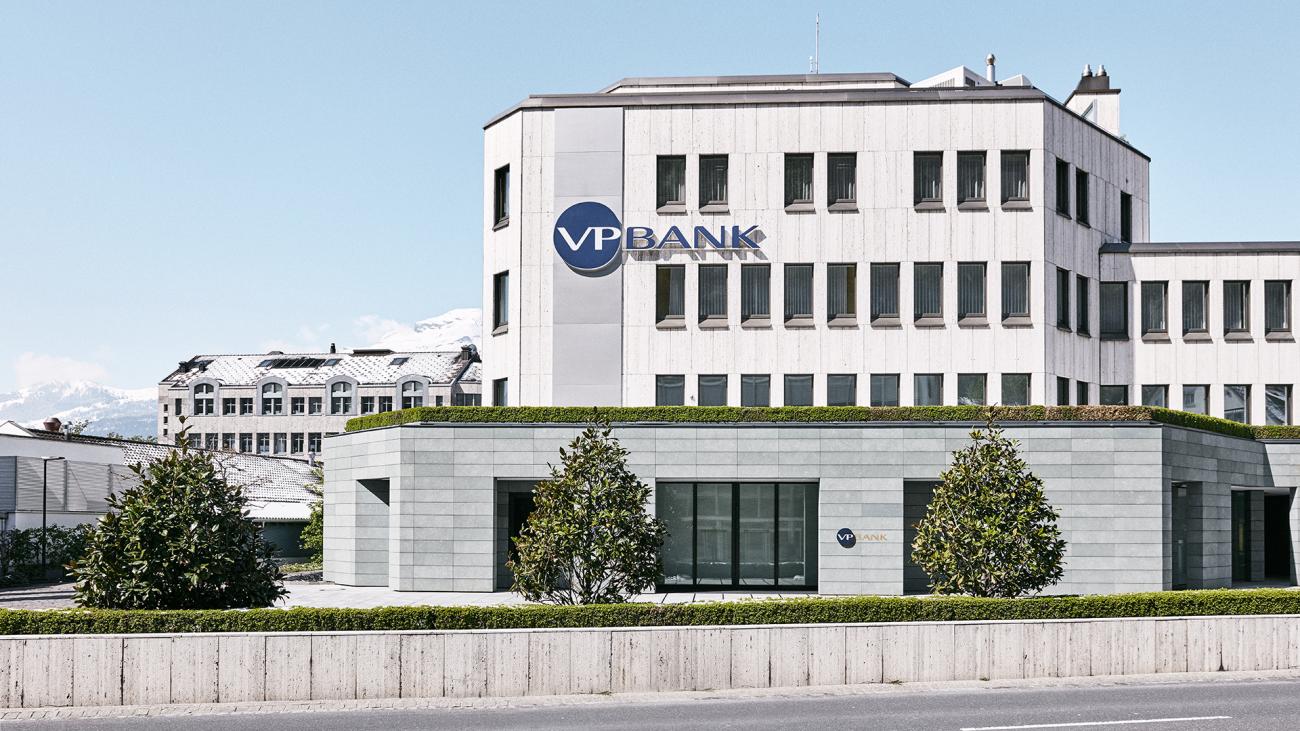2016 saw a very positive annual result for VP Bank Group: a group net income of CHF 58.0 million
VP Bank Group reported a group net income of CHF 58.0 million for the 2016 financial year, making excellent progress as the market developed. A slightly more positive net new money inflow was able to be reported for 2016; in the previous year there was still CHF 658 million that was drained away.
Key figures at a glance
-
Group net income: CHF 58.0 million
-
Client assets under management: CHF 35.8 billion
-
Net new money inflow from client assets: CHF 7.0 million
-
Cost/income ratio: 68.4 percent
-
Tier 1 ratio (core capital ratio): 27.1 percent
A significantly higher adjusted Group net income
VP Bank Group reported a Group net income of CHF 58.0 million for the 2016 financial year. Both the merger of VP Bank and the Centrum Bank and the one-time item created by IAS 19 had a positive impact on the net income for the previous year, which totalled CHF 64.1 million. Without any influence from this one-time item in 2015, the net profit made in 2016 would have been 27.4 million, or 89.5 percent, above the adjusted group net income of CHF 30.6 million reported in the previous year. In comparison to the previous year, the total operating income decreased by 10.9 percent, from CHF 306.6 million to CHF 273.2 million. However, the operating income actually increased by 16.7 million (6.5 percent) if this one-time item of CHF 50.0 million is not considered. The total net interest income result showed an increase of 15.8 percent in relation to the previous year, totalling CHF 102.4 million. In 2016, the income from commission business and services decreased by 6.0 percent to CHF 118.8 million, whereas the income from trading activities rose by 5.5 percent to CHF 44.5 million. A result amounting to CHF 7.6 million was produced from financial assets (previous year: loss of CHF 0.7 million).
Decrease in operating expenses
Operating expenses decreased by CHF 34.2 million compared to the previous year, from CHF 246.4 million to CHF 212.2 million (13.9 percent decrease). Once again, this decrease is primarily influenced by the one-time item over the course of the merger which increased the previous year’s expenses. In 2016, general and administrative expenses fell by 14.2 percent to CHF 51.7 million, a decrease which again resulted from the merger and the associated temporary parallel operations. In comparison to the previous year, personnel expenses increased by 11.0 percent to CHF 135.3 million due to the one-time item created by IAS 19. The number of staff was slightly increased compared to the total reported on 31 December 2015, with the number of fulltime positions rising by 3.9 to 738.3. In line with strategic initivatives for growth, VP Bank focused on restructing, whilst simultaneously eliminating anything that was duplicated. Depreciations and amortisations were 41.4 percent down on the previous year, amounting to CHF 22.4 million. In comparison to the previous year, valuation adjustments, provisions and losses significantly decreased by a total of CHF 23.3 million.
In 2016, the cost/income ratio increased to 68.4 percent (previous year: 59.4 percent). If companies in the sector are compared, VP Bank Group has an exceptionally comfortable equity base, with a tier 1 ratio of 27.1 percent (previous year: 24.4 percent), making future acquisitions possible. In 2016, total assets were down on the previous year by a desirable 4.6 percent, a decrease to CHF 11.8 billion.
Client assets under management continue to increase
Client assets under management by VP Bank Group amounted to CHF 35.8 billion at the end of 2016, showing an increase of 2.8 percent in comparison to the previous year’s total of CHF 34.8 billion. This performance-related growth in assets amounted to CHF 978 million in 2016 (previous year: decrease by CHF 2,216 million). The main reason behind this increase can be traced back to the rising share prices and the growth of the USD, which in turn resulted in the appreciation of client assets under management in foreign currencies.
In 2016, VP Bank Group reported a net new money inflow from client deposits in the amount of CHF 7.0 million (previous year: organic net new money inflow of CHF minus 658 million). Compared to the organic development of net new money in 2015, net new money showed a significant improvement in 2016. Strong market development meant net new money inflows were particularly healthy in the Asian market. Furthermore, outflows had to be recorded in Europe, against the backdrop of the regulatory environment and taxation.
Custody assets decreased to CHF 5.8 billion (previous year: CHF 6.6 billion). Total client assets, including custody assets, amounted to CHF 41.5 billion on 31 December 2016 (previous year: CHF 41.4 billion).
Strategy 2020
The Board of Directors came up with “Strategy 2020”, a strategy which aligns VP Bank group’s focus with the modifications made to market and framework conditions. On this basis, VP Bank’s organisation and management structure were made stronger throughout 2016 and responsibilities within the Group Executive Management were defined anew. “The structure determined by the Board of Directors has a stronger orientation towards clients and sales. It will help us grow as a group in terms of profit, as well as helping us to improve our quality in target markets and generate added value for clients,” explains Fredy Vogt, chairman of the VP Bank Board of Directors.
Digitalisation is increasing and IT-based solutions are becoming ever more important in both intermediary business and private banking, therefore selectively integrating significant functions and processes means VP Bank can follow suit, and any further complexities and costs can be reduced.
A further priority is adapting the organisation of the strategically important intermediary business to the revised market and customer-orientated focus, as well as a new information platform for intermediaries. The fact that the team in Singapore has been reinforced highlights the growing importance of the Asian markets. Speaking of growth, the fund business has also been developed successfully.
In 2016, VP Bank pressed ahead with the customer-oriented digitalisation and automatisation of internal processes in order to increase efficiency. “Digitalisation” is also the main theme of VP Bank’s 2016 annual report, illustrating its growing importance for the financial sector. VP Bank is staying abreast of this transformation by involving a Strategy & Digitalisation Committee established by the Board of Directors, as well as with a programme rolled out across banks over several years.
Annual general meeting of shareholder
At the annual general meeting held on 28 April 2017, the Board of Directors will propose to pay out a dividend of CHF 4.50 per registered share A (previous year CHF 4.00) and CHF 0.45 per registered share B (previous year CHF 0.40). These dividends are planned to be paid out following the dividend policy set out by the Board of Directors. VP Bank strives to maintain a consistent approach to dividend distributions. The Board of Directors based their proposed decision to increase dividends on the group net income of CHF 58.0 million achieved in 2016.
Furthermore, it was proposed that a donation in the amount of CHF 2 million be made to the VP Bank foundation.
The Board of Directors will also propose that Prof. Dr Teodoro D. Cocca, Dr Beat Graf and Michael Riesen all be re-elected as members of the Board for terms of office lasting three years.
Dr Daniel H. Sigg abstained from a re-election and will retire from the Board of Directors during the General Meeting of 28 April 2017. He was elected as a member of the Board in 2008 and served terms of office as chairman of the Risk Committee and as a member of the Audit Committee of the Board of Directors. The Board of Directors would like to thank Dr Daniel H. Sigg for his extensive commitment to VP Bank and wish him all the best for the future.
Outlook
During 2016, VP Bank laid down a solid base for increased profitability. At the same time, VP Bank will press forward with their rigorous cost management by further maximising savings potential and optimising the products and services on offer.
Growth will continue to be a key topic in 2017. Changes are underway in Europe and Asia is continuing to develop into a driving force. For VP Bank, this means the quality of customer service should strictly continue to be improved and experienced teams should be expanded – particularly in Asia. Furthermore, any available market opportunities should be taken to invest in growth through acquisitions. VP Bank continues to have an extremely solid equity base, enabling the company to actively benefit from the transformation in the financial sector.
“The result achieved in 2016 shows that VP Bank could significantly increase the normalised basis for profit on the one hand, and on the other hand, it shows that they have found themselves back on track for growth. Additionally, the merger from 2015 has been entirely and successfully completed,” concludes Alfred W. Moeckli, Chief Executive Officer of VP Bank Group.
The annual report 2016 can be viewed as PDF or as an online report.


